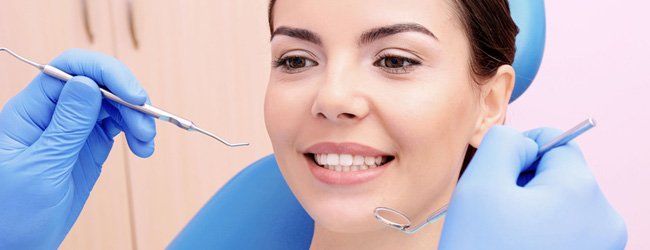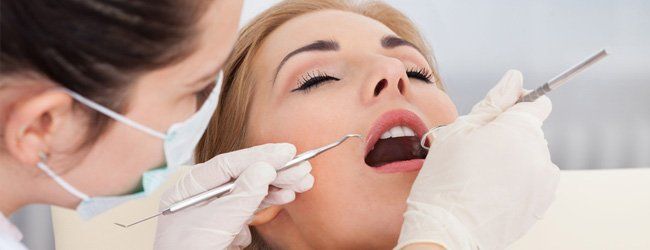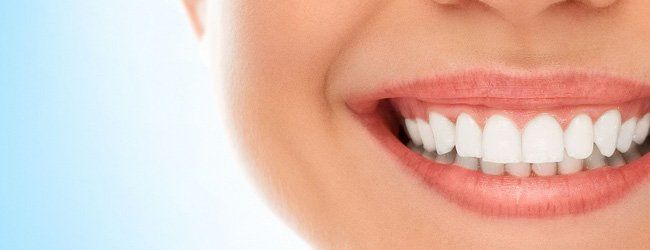Periodontics
Periodontics
- Family Dentistry- Multi-Specialty Practice- All Procedures Done Under One Roof
Rely on Our Periodontist for Quality Dental Implants
A Periodontist is a dentist who specializes in the prevention, diagnosis, and treatment of periodontal disease, and in the placement of dental implants. They are experts in the treatment of diseases of the gums, receiving three additional years of education beyond dental school.

Periodontal Treatments
Periodontists offer a wide range of both non-surgical and surgical treatments. If periodontal disease is caught early, the doctor may be able to reverse some or all of the damage with non-surgical treatments. If the disease is more advanced surgical procedures are often performed to return form and function. The ultimate goal of periodontal therapy is to promote healthy gums and teeth by stabilizing and maintaining your existing dentition.
Contact
Princeton Dental Group to schedule your appointment.

Receive Proper Periodontal Treatment
The first stage of gum disease, gingivitis, is often accompanied by little or no discomfort. Sometimes, the only way to detect periodontal disease is through a comprehensive evaluation. Regular examinations are very important to keep track of the present status of your disease and any disease progression over time.
We will work with you to create a maintenance schedule depending on how advanced your periodontal disease is at the time. Based on many variable factors such as your overall health, the severity of bone loss and risk factors such as smoking and genetics, we will constantly tailor your care so your periodontal disease does not progress further.

Non-Surgical Periodontal Treatment
The first line of defense against gum disease is a unique type of cleaning called “scaling and root planing.” In this procedure, an ultrasonic cleaning device is used to remove plaque and tartar from your teeth where regular cleaning devices can't reach: under the gum line, on the tooth, and around the root. Then, the rough surface of the tooth and the root are smoothed out (planed). This provides a healthy, clean surface that makes it easier for the gum tissue to reattach to the tooth.
If you address your gum disease before it becomes severe, scaling and root planing may be the only treatment you need. However, as with any dental procedure, after-care is vital. In order to keep your teeth in good shape and resist future occurrences of gum disease, you must brush and floss daily, eat a healthy diet, avoid tobacco use, and have regular dental checkups. Even after a successful scaling and root planing, if you don't attend to your teeth properly, it's quite likely that you'll develop gum disease again.

Surgical Periodontal Treatment Options
If the tissue or bone surrounding your teeth is too damaged to be repaired with non-surgical treatment, several surgical procedures are available to prevent severe damage and to restore a healthy smile. We will recommend the procedure that is best suited to the condition of your teeth and gums. Following is a list of common types of periodontal surgery:
Pocket Depth Reduction
In a healthy mouth, the teeth are firmly surrounded by gum tissue and securely supported by the bones of the jaw. Periodontal disease damages these tissues and bones, leaving open spaces around the teeth that we call pockets. The larger these pockets are, the easier it is for bacteria to collect inside them, leading to more and more damage over time. Eventually, the supportive structure degrades to the point that the tooth either falls out or needs to be removed.
During pocket reduction procedures (also known as “flap surgery”), we fold back the gum tissue and remove the bacteria hiding underneath, as well as the hardened plaque and tartar that have collected. We may also remove any tissue that is too damaged to survive. We then sew the healthy tissue back into place. Now that the tooth and root are free of bacteria, plaque, and tartar, and the pockets have been reduced, the gums can reattach to the teeth.
Regeneration
When the bone and tissue supporting the teeth have been lost due to severe gum disease, we can restore these areas with a regeneration procedure. During this process, we begin by folding back the gum tissue and removing the bacteria, plaque, and tartar. Depending on your situation, we may then perform a bone graft to stimulate new bone growth, or we may apply a special kind of protein that stimulates tissue growth to repair the areas that have been destroyed by the disease.
Soft-Tissue Graft
A frequent symptom of gum disease is gum recession (also called gingival recession). As the gums recede, more of the roots are revealed. This can make teeth appear longer and can also create sensitivity to hot or cold liquids or food. It also exposes the tooth to increased damage from gum disease, as bacteria, plaque, and tartar attack the surface of the tooth and the root.
During a soft-tissue graft, tissue from the top of your mouth or another source is sewed to the gum area, covering the roots and restoring the gum line to its original, healthy location. This procedure can also be performed for cosmetic reasons.
Request a Service
Website Request Form
Thank you, your information has been submitted and we will contact you shortly. If you seek immediate attention please call (609) 924-0796.
Princeton Dental Group
Oops, there was an error sending your message.
Please try again later.
Please try again later.
CALL US
This is a placeholder for the Yext Knolwedge Tags. This message will not appear on the live site, but only within the editor. The Yext Knowledge Tags are successfully installed and will be added to the website.
VISIT US
,
This is a placeholder for the Yext Knolwedge Tags. This message will not appear on the live site, but only within the editor. The Yext Knowledge Tags are successfully installed and will be added to the website.
EMAIL US
HOURS
This is a placeholder for the Yext Knolwedge Tags. This message will not appear on the live site, but only within the editor. The Yext Knowledge Tags are successfully installed and will be added to the website.
This is a placeholder for the Yext Knolwedge Tags. This message will not appear on the live site, but only within the editor. The Yext Knowledge Tags are successfully installed and will be added to the website.
Hi. Do you need any help?
Privacy Policy
| Do Not Share My Information
| Conditions of Use
| Notice and Take Down Policy
| Website Accessibility Policy
© 2024
The content on this website is owned by us and our licensors. Do not copy any content (including images) without our consent.






Share On: